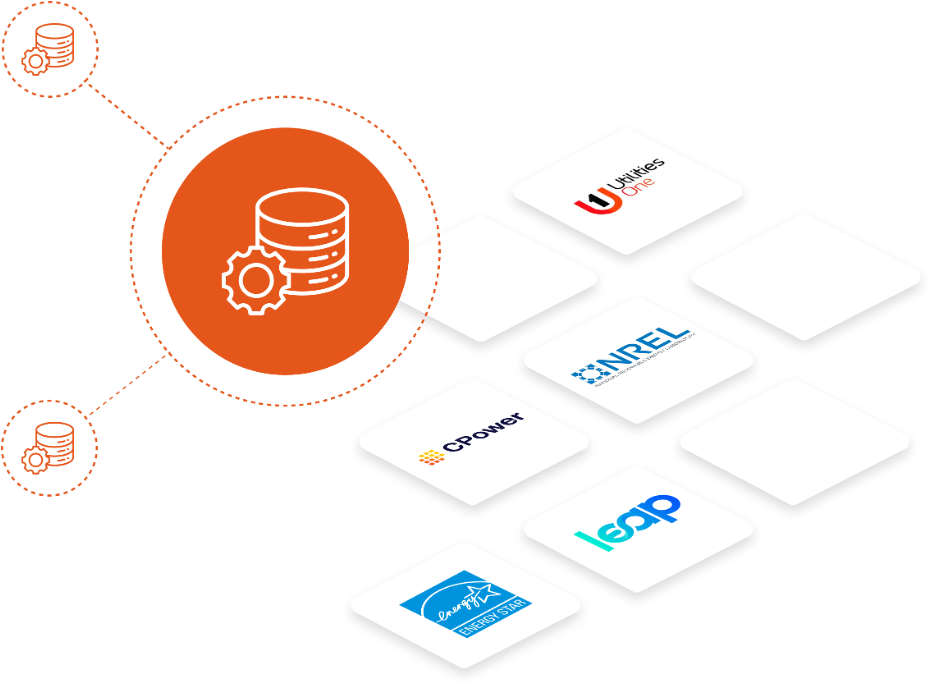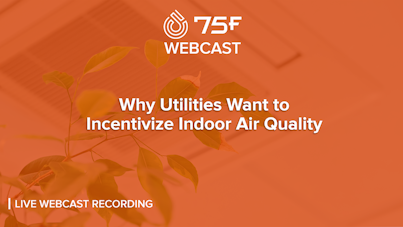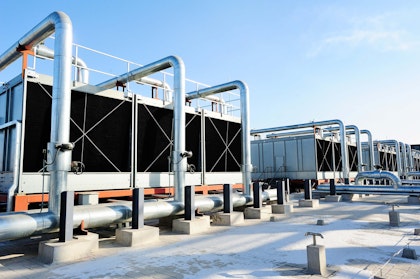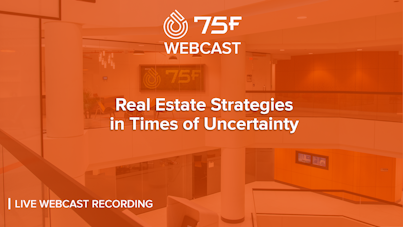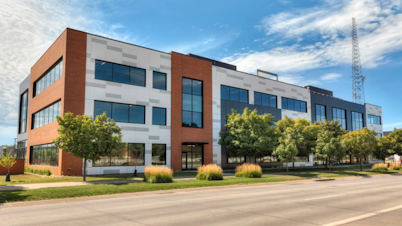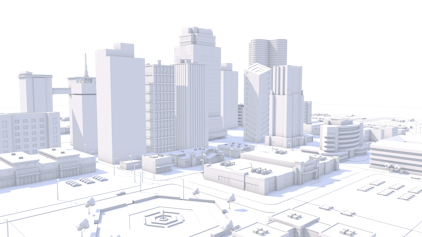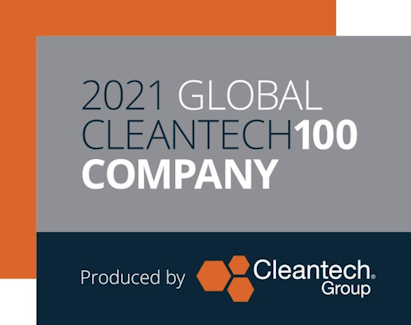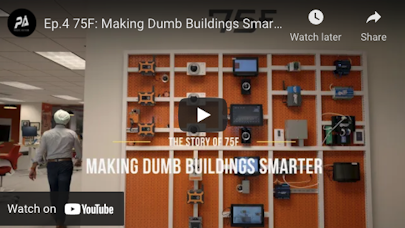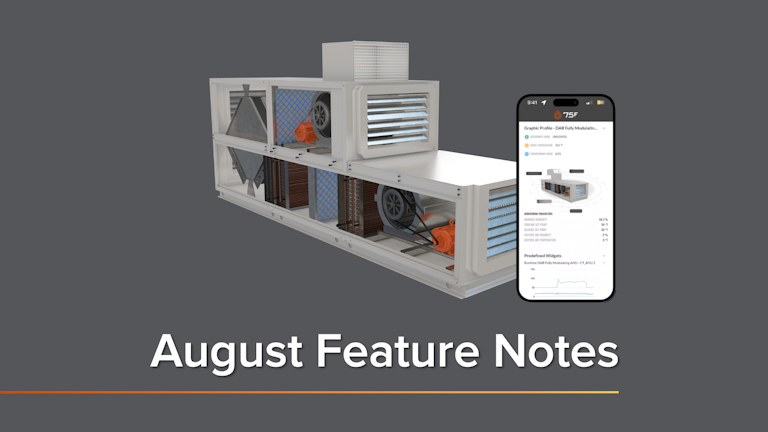
August Feature Notes
Welcome to 75F's August Feature Notes. Our cloud-based software and controls are continually improving – this month, we’re summarizing four of the most exciting new features and system enhancements our engineers worked hard to release.
They include two new capabilities that put installer and technician experience improvements front and center, plus Machine Learning (ML) improvements to preconditioning and easier API integrations.
Let’s dive in and explore what you can do with these new features.
75F Active Scan: Empowering Technicians with Instant Insight
With 75F Active Scan, installers and service technicians with a mobile device can see real-time, read only data from any building equipment on the 75F system. By simply scanning a code on a piece of equipment with a smartphone or tablet, users can view live parameter values, trends, and detailed graphical visualizations on the spot.
This intuitive solution eliminates the need to search for information, enabling quick, informed decisions during maintenance or troubleshooting. The real-time nature of the data allows for immediate identification of issues, faster problem resolution, and more accurate decision-making in the field. This not only saves valuable time but also reduces the likelihood of errors, enhancing overall service quality and system reliability.
Remote Access of the Android Central Control Unit Tablet
75F’s applications have always been remotely accessible thanks to the system’s cloud-native design. However, as an Android tablet, the Central Control Unit (CCU) has some device configurations that historically have only been accessible manually. This includes actions like password monitoring or troubleshooting tablet errors.
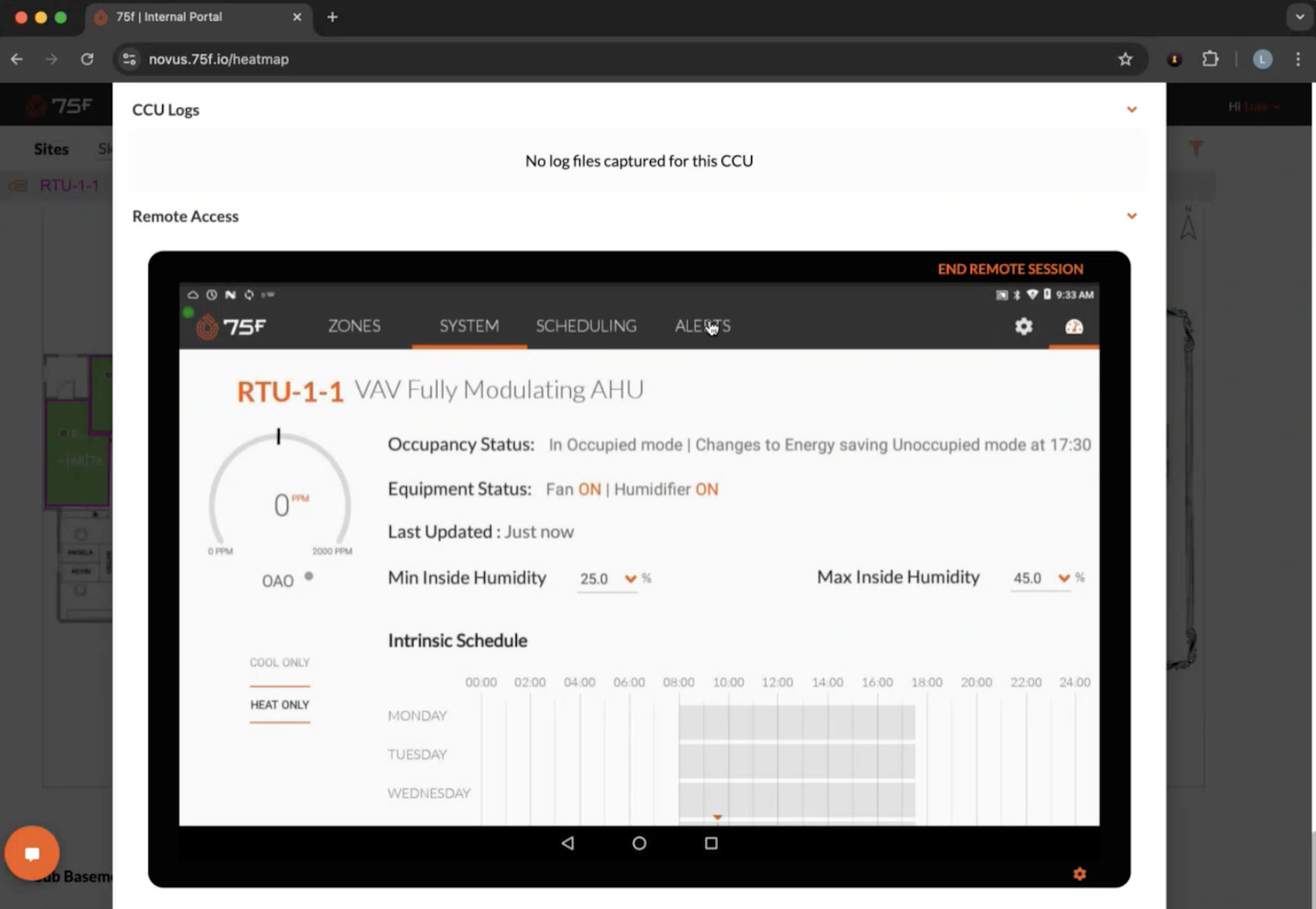
This changes with remote access for certified 75F installers. Remote tablet access gives installers the power to troubleshoot tablet errors, change tablet settings, and more — all from a distance. Installers can even enforce password requirements for system settings at the tablet if there’s a security concern.
This feature introduction overall reduces required site visits, improves troubleshooting confidence and resolution times, as well as facilitates easy device configuration walkthroughs between installer and end user.
CCU version 213 and above required for this feature to work.
Machine Learning Enhancements to Preconditioning
Before scheduled occupancy begins in a building each day, zones under 75F control undergo a process called preconditioning. Preconditioning ensures that rooms are comfortable for occupants after being in a setback mode all night while the building was empty. The amount of effort required to effectively precondition a zone varies from building to building, depending on unique factors such as the climactic zone, the weather forecast, and typical real vs scheduled occupancy patterns.
Typically, building automation users must analyze their building’s preconditioning data and use tuners to make the process more efficient. 75F uses Machine Learning (ML) to automatically adjust tuners based on historical building and occupancy data, a building’s unique weather forecast, and trained knowledge of how HVAC equipment works.
This month, we released an improvement to this process to better optimize preconditioning day by day. This improvement drops preconditioning equipment runtime and therefore reduces overall HVAC runtime by approximately 6 percent.
This improvement is currently available for the HyperStat’s Conventional Package Unit (CPU) profile, with rollouts to further profiles coming soon.
APIs and External Integration Blocks
75F's new External API Integration Block opens a world of possibilities for enhanced building automation and data utilization. Where using 75F’s API to expose our data to third parties is a common customer use case, 75F is now making it even easier to bring third-party data into our system for integration and display within our user portal, Facilisight.
Without going too deep into the weeds, this tool improvement better facilitates data such as real-time utility rates, occupancy, demand response peak times, or any other external information our users want to see on their Facilisight dashboards.
